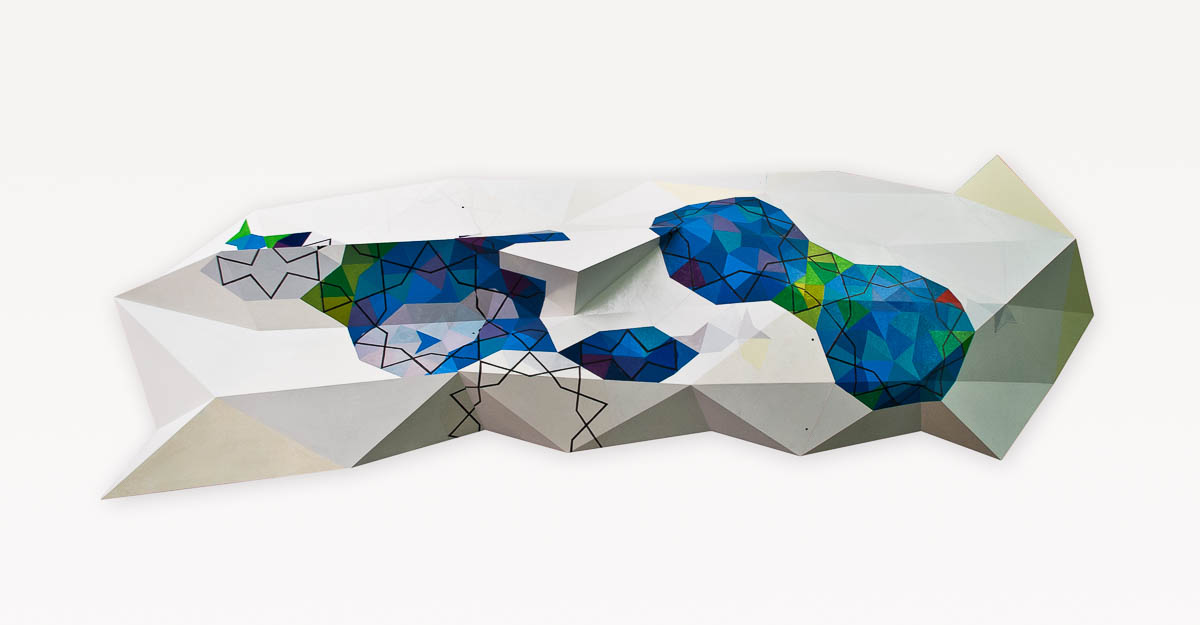Geometry, art and the mathematical sublime

Many people view mathematics as a dry, abstract and rather scary subject. Because of this unfortunate reputation I've hitherto been fairly reluctant to discuss the relationship between mathematics and my work.
There are a number of risks in talking about this relationship, the most significant of which are that my work might be construed broadly as being about mathematics, or more narrowly as being in some way illustrative of mathematical ideas. Both interpretations would be misplaced and in my view difficult to sustain on a close examination — but such close and critical interpretation is rare.1
My interest in mathematics, and geometry in particular, comes from a number of sources. The most important stems from my interest in physics. Of all the sciences physics is certainly the most dependent on mathematics, and in principle everything can be described in physical terms. (Whether such a description is meaningful or useful in a given context is a different matter.) It follows that everything can in principle be described mathematically.
This is interesting for a number of reasons. Firstly, it is intriguing that a field that in itself is the epitome of pure abstraction is so applicable to the real world. It's obvious that if you model something mathematically, such as the acceleration of a falling mass, that a well designed model will make reliable predictions. What is far from obvious is why it should be that exercises in pure mathematics so often turn out to have real applications.
Secondly — and this is the topic that interests me most — one has to wonder why it is that we are capable of modelling phenomena mathematically and theoretically that we have difficulty imagining. My favourite example is the question of higher spatial dimensions. Mathematically it’s almost trivial to model forms that occupy an arbitrary number of dimensions, but our imaginations struggle with anything beyond three spatial dimensions. I’ve found that with practice I can visualise simple forms in four dimensions, but five is very difficult, and six dimensions is certainly beyond me. Perhaps it’s just a matter of practice — but clearly there are limits to what our imaginations can cope with. Further, I suspect that much of my visualisation (to use an obviously inadequate term) is merely imagination by analogy.
It’s here that we find that there’s a direct point of contact between the cool abstract realm of geometry and both our limitations and potential as human beings. With Kant, I regard the sublime as an aesthetic that arises from an indeterminate and ambiguous relationship between our imagination and our reason. In Kant’s view the mathematical sublime stems from our inability to imaginatively comprehend the boundless and infinite (whether infinitely large or infinitely small) despite our ability to comprehend it in purely rational terms.
- I should point out that I’m a very mediocre mathematician and I find that I have to work hard at it, and I've started my mathematics blog (tangentarc.net as a way of focusing my efforts. My command even of basic areas such as trigonometry is rather shaky, so perhaps my natural inclination ought to be that of many in the humanities: shun mathematics at all costs! Not likely.
